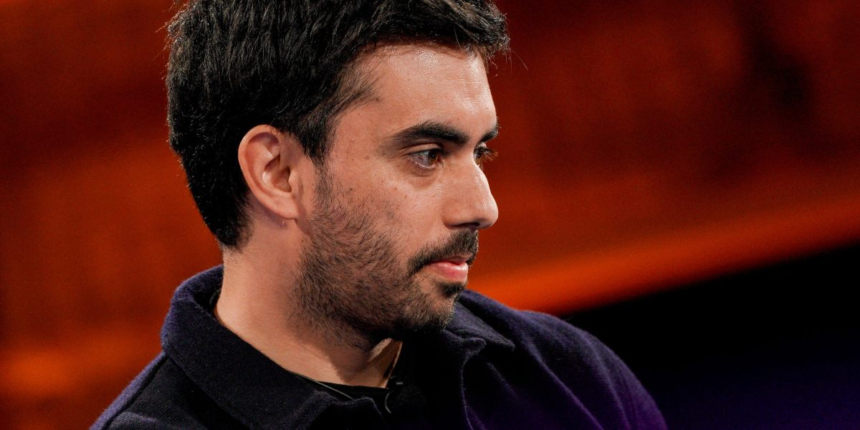In 1874, the First Impressionist Exhibition was a disaster.
Artists like Claude Monet, Pierre-Auguste Renoir, and Edgar Degas were ridiculed, their work described by critics as “base,” “unfinished,” and the worst thing to ever happen to art. A commercial flop, the exhibition saw 3,500 visitors, who mostly sauntered by to express horror at the plain frames and individual brushstrokes.
About a decade later, Georges Seurat would start A Sunday Afternoon on the Island of La Grande Jatte. Seven feet tall and ten feet wide, Sunday would become the most famous example of an Impressionist offshoot technique, pointillism.
“Pixels are the building blocks of digital images, tiny tiles forming a mosaic,” the film’s velvety voiceover says. “Each pixel is defined by numbers representing color and position. Therefore, any digital image can be represented as a sequence of numbers…Therefore, every photograph that could ever be taken exists as coordinates. Every frame of every possible film exists as coordinates. Every face that could ever be seen exists as coordinates. To deny this would be to deny the existence of numbers themselves.”
Jacob Adler, who made Total Pixel Space, is a classically-trained musician and composer, a multidisciplinary artist rendered a filmmaker by advances in AI. Adler worked on the film for more than a year, generating tens of thousands of images along the way, inspired by Jorge Luis Borges’s short story “The Library of Babel” and the miracle of making sense in a random, vast world.
“I was fascinated by the act of generating these images, and it spawned all these philosophical questions,” said Adler. “In this vast combinatorial space of language, the overwhelming majority of combinations of letters are gibberish and nonsense. So, apply that to digital imagery: How many images can possibly exist? And how many of these images are incomprehensible noise? I tried expressing this idea in other media, and it just failed. But it came together as a short AI film.”
“We’re going to have all these new forms of media that go beyond film and games, that exist in all the spaces in-between,” said Anastasis Germanidis, Runway CTO and cofounder. “Some of it might look more like immersive theater productions, where there’s a fixed storyline, but you can kind of move around, experiencing it from different perspectives.”
Germanidis added: “Imagine these models get really good at generating realistic depictions of reality, and you have a world where you can essentially simulate most of what we care about as we navigate the world. That’s going to be both a very important piece of solving problems.
Germanidis is thinking about world simulation as a principle more than anything else; one that could be applied not just to stories, but to biology, robotics, and physics. It’s distinctly about finding ways to mimic not just humans, but physics and biology.
“If you have a predetermined way of getting there, it’s too late and it’s obvious,” Valenzuela said. “For me, it goes back to how creative [something is]…. If you’re not involved in creative acts, you don’t understand. Most people who have any form of creative expression within their work know that when they start, they don’t exactly know where they’re heading. You’re putting yourself in a very vulnerable position to just explore everything. Then, eventually you’ll know by experience that you will have to land somewhere.”
The history of art is a history of technological disruption, from the invention of the printing press to the advent of “talkies” in the 1920s. Job displacement is, of course, part of that story—and always has been.
“Before the printing press, it was all monks and people who knew how to share specific stories,” said Valenzuela. “Then, with the printing press, more people could read and write, which was treated as an apocalyptic event.”
This is true: When the printing press was invented in 1440 and adoption of the technology spread, religious authorities worried about losing control, and guilds of scribes were displaced. But a world of people could now read, and stories could scale.
Valenzuela brings up another example, this one infused with a comically droll element:
“Before alarm clocks were invented, you’d hire a guy who came to your door, at the time you wanted, and throw up a stone to your window,” said Valenzuela. “That was a job. What else were you going to do if you didn’t have family around and needed to wake up?”
“It’s been a little dirty secret, because whether it’s Runway or, you know, he does have a little competition,” said Michael Burns, vice chair at Lionsgate onstage at AIFF, gesturing to Valenzuela. “We believe that this tool is being used by everybody that doesn’t talk about the fact that they’re using it.”
Runway’s Germanidis says there are three phases of technological art evolution: getting the technology to work, imitating existing art forms, and then creating unique forms. We’re just starting to “enter that third stage with, like generative generative models,” he said. That’s not to say, of course, that everything should be AI—for Adler, an artist whose practice has fundamentally expanded with AI, is very clear that some things (like surrealistic images and philosophical concepts) are well-suited to AI, whereas other material (like complex human interactions) isn’t.
“I look at [AI] as a tool, but I don’t know yet if I’m convinced that it’s a new genre,” said Adler. “There are things I can produce with cameras that are impossible with AI and vice versa—things I can do with AI that are impossible with cameras.”
That alone is an incredible phenomenon that speaks to excitement, and fear, that Runway and its video AI rivals are already causing throughout the worlds of art, media, and entertainment. For Runway’s founders however, the real payoff of their AI vision, if they can pull it off, will extend far beyond the screen, existing as something spectacular, immersive—and probably unrecognizable.









